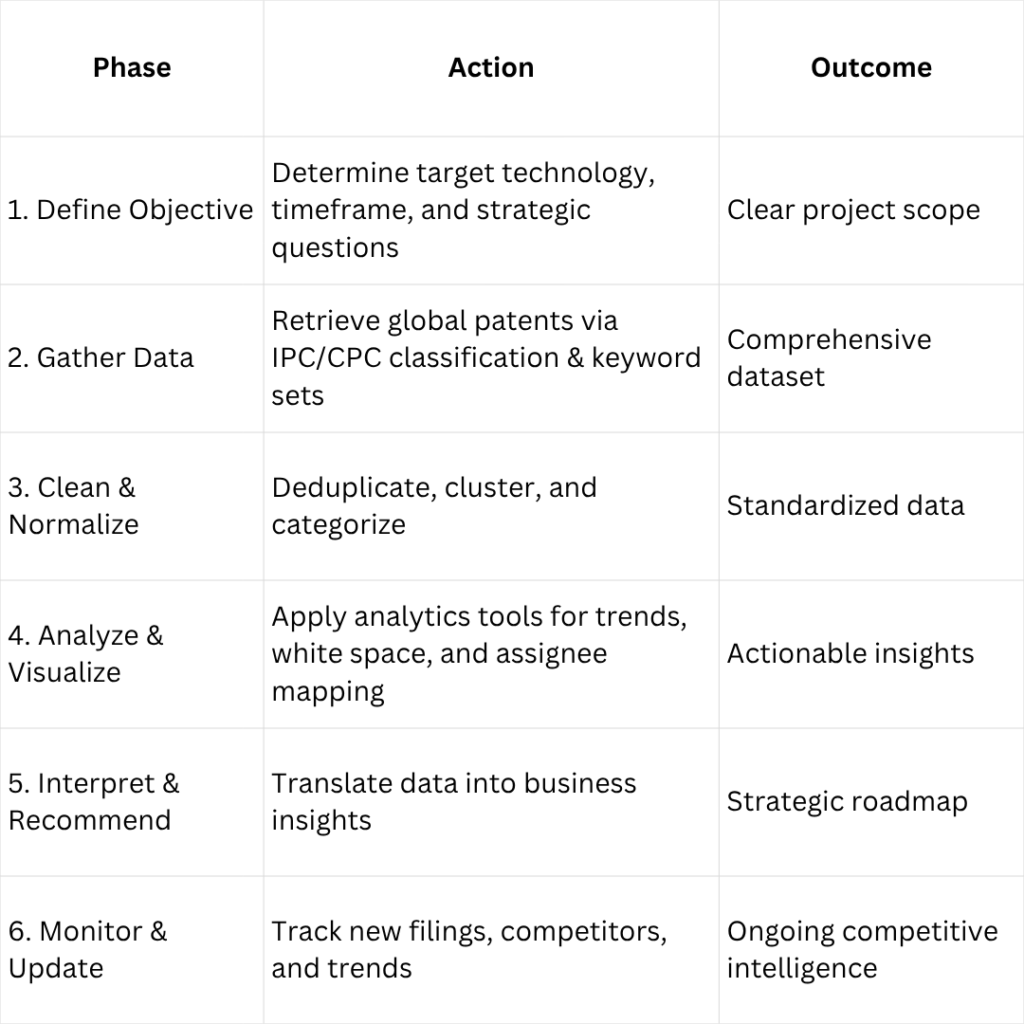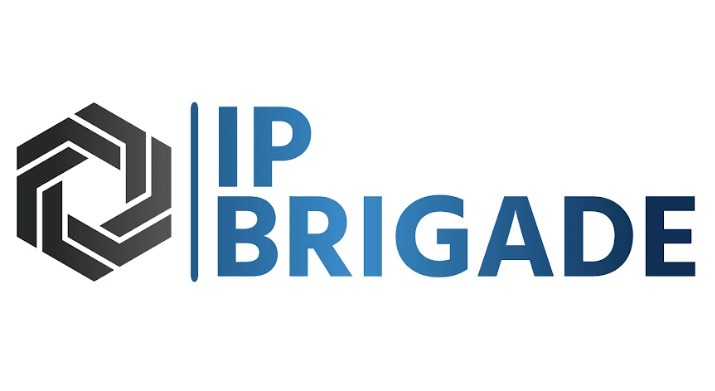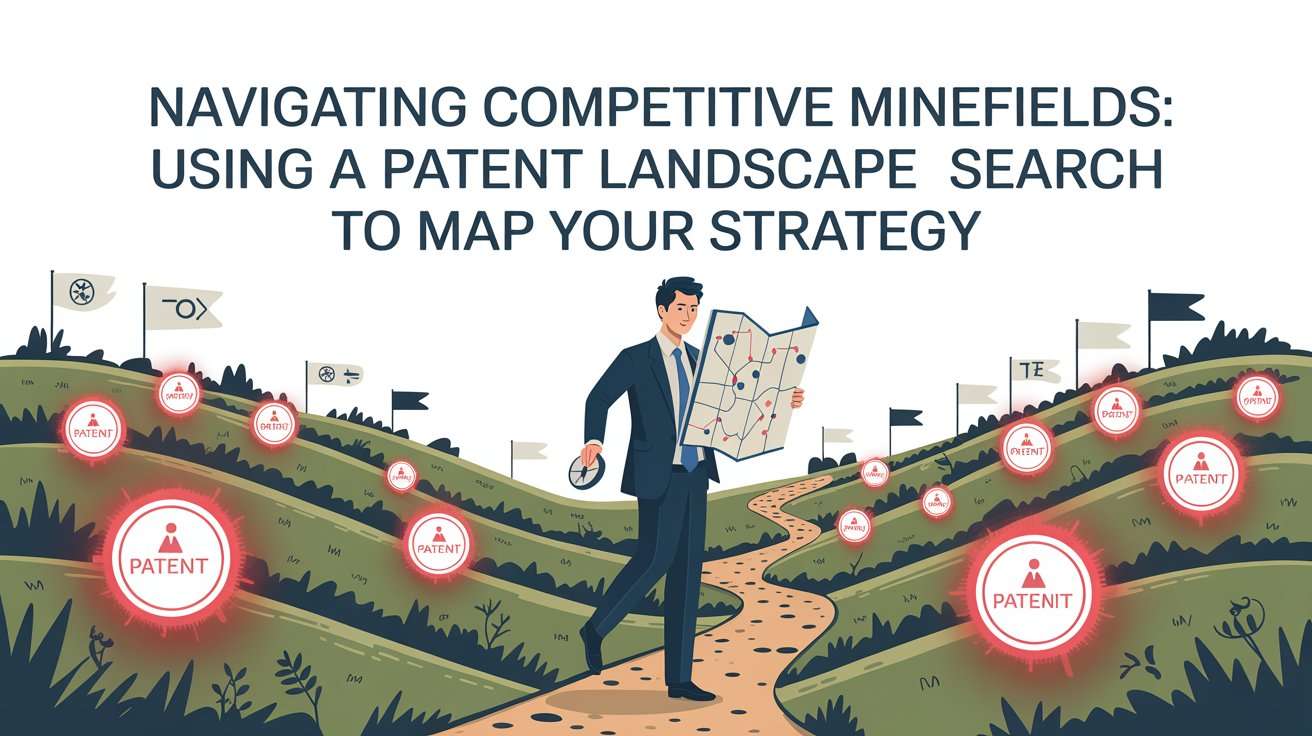In fast-moving and fiercely competitive technology industries, innovation alone isn’t enough. What separates industry leaders from followers is strategic intelligence the ability to understand where competitors are heading, where the next wave of innovation will emerge, and where “white space” lies untapped.
A well-executed Patent Landscape Search serves as your business intelligence tool, giving you the data-driven clarity to navigate competitive minefields and shape smarter business strategies.
What Is a Patent Landscape Search?
A patent landscape search (or patent landscaping) is a comprehensive analysis of all patent data within a specific technology field. Unlike a simple Prior Art Search, a landscape goes far beyond—it reveals who is innovating, where innovation is happening, and what technologies are growing fastest.
In essence, it turns intellectual property data into actionable insights—patent analytics that drive business decisions.
According to the World Intellectual Property Organization (WIPO), patent analytics helps organizations understand technology trends and competitive dynamics at a global scale.
Why Treat the Patent Landscape as a Business Intelligence Tool
Here’s how companies leverage patent landscapes for strategic advantage:
1. Reveal Competitors and Emerging Players
A well-structured patent landscape shows you who’s filing what and where. It identifies both known and hidden competitors—startups, research institutes, or global players you might never have noticed.
By mapping patent ownership and filing frequency, you can monitor competitor patent activity, track new entrants, and benchmark your R&D intensity against others.
Example: A study by RWS shows how companies use landscape analytics to spot hidden innovators and predict market entrants.
2. Uncover Technology Trends and Growth Areas
Patent filings often precede market shifts. A patent landscape analysis reveals which sub-technologies are accelerating or declining, helping R&D teams and investors predict where innovation will surge next.
At IPBrigade, our experts visualize this data through trend charts, keyword heat maps, and assignee clusters, turning raw data into clear insights for your strategy.
As highlighted by Caldwell Law, organizations that regularly analyze patent landscapes outperform their peers in innovation investment decisions.
3. Identify White Space and Innovation Gaps
White space analysis is where the true gold lies. It identifies areas with little or no patent activity, meaning fertile ground for new inventions, R&D focus, or freedom to operate.
Learn how TPR International explains white space mapping for strategic innovation planning.
By overlaying your portfolio with the broader patent landscape, you can visualize overcrowded zones, untapped opportunities, and potential research pivots before your competition does.
4. Spot M&A, Licensing, and Collaboration Targets
Patent landscape studies also function as deal-intelligence tools. They can help identify:
- Companies holding complementary technologies
- Potential licensing opportunities
- Acquisition targets with under-leveraged IP portfolios
Firms like Ocean Tomo use patent landscapes to guide mergers, acquisitions, and IP-driven valuation strategies.
Integrating patent insights into your M&A strategy ensures that every acquisition not only fits commercially but also strengthens your intellectual property position.
5. Minimize Risk and Avoid Patent Minefields
Innovation investments are risky when you can’t see the full terrain. A patent landscape report highlights crowded areas and potential blocking patents that could cause litigation or infringe on competitors’ IP.
This visibility helps avoid R&D duplication, costly re-engineering, or post-launch disputes—saving time, money, and credibility.
As Questel’s Orbit Intelligence explains, IP analytics allows companies to avoid “red zones” and confidently choose freedom-to-operate paths.
How to Conduct a Strategic Patent Landscape Analysis
A successful Patent Landscape Study follows these structured steps:

Real-World Scenarios
Tech Startup (Battery Materials) – Used patent landscaping to identify unpatented materials, saving millions in R&D costs.
Global Electronics Firm – Found a small company with valuable niche patents, leading to a strategic acquisition.
Pharma Innovator – Detected new entrants from AI and data science domains and filed preemptive patents.
Venture Capital Firm – Leveraged patent trend data to spot early investment targets in emerging technologies.
These stories reflect how strategic patent intelligence drives real-world business decisions.
Best Practices for Effective Patent Landscaping
- Define precise objectives – Focus on specific domains to prevent dilution of results.
- Iterate frequently – Technology evolves fast; update your landscape quarterly or biannually.
- Engage subject-matter experts – Contextual understanding improves data accuracy.
- Visualize insights – Use heat maps, cluster graphs, and trend curves.
- Align with corporate strategy – Merge insights with product, R&D, and M&A plans.
- Avoid bias – Let the data tell the story; don’t force assumptions.
- Define precise objectives – Focus on specific domains to prevent dilution of results.
Why Choose IPBrigade for Patent Landscape Search
At IPBrigade, we transform raw IP data into business foresight. Our Patent Landscape Search Service empowers companies to:
- Understand competitor IP portfolios
- Detect emerging technology trends
- Identify R&D white space
- Support M&A and licensing decisions
We combine expert analysts, advanced patent databases, and AI-driven visualization tools to deliver strategic clarity that aligns with your business goals.


